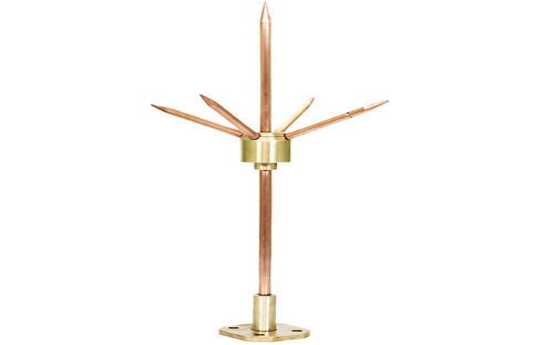The history of lightning arresters
2024-06-26
2024-6-26
In what later became the United States, the pointed lightning rod conductor, also called a lightning attractor or Franklin rod, was invented by Benjamin Franklin in 1752 as part of his groundbreaking exploration of electricity. Although not the first to suggest a correlation between electricity and lightning, Franklin was the first to propose a workable system for testing his hypothesis. Franklin speculated that, with an iron rod sharpened to a point, "The electrical fire would, I think, be drawn out of a cloud silently, before it could come near enough to strike." Franklin speculated about lightning rods for several years before his reported kite experiment.

In the 19th century, the lightning rod became a decorative motif. Lightning rods were embellished with ornamental glass balls (now prized by collectors). The ornamental appeal of these glass balls has been used in weather vanes. The main purpose of these balls, however, is to provide evidence of a lightning strike by shattering or falling off. If after a storm a ball is discovered missing or broken, the property owner should then check the building, rod, and grounding wire for damage.
Balls of solid glass occasionally were used in a method purported to prevent lightning strikes to ships and other objects.The idea was that glass objects, being non-conductors, are seldom struck by lightning. Therefore, goes the theory, there must be something about glass that repels lightning. Hence the best method for preventing a lightning strike to a wooden ship was to bury a small solid glass ball in the tip of the highest mast. The random behavior of lightning combined with observers' confirmation bias ensured that the method gained a good bit of credence even after the development of the marine lightning rod soon after Franklin's initial work.




